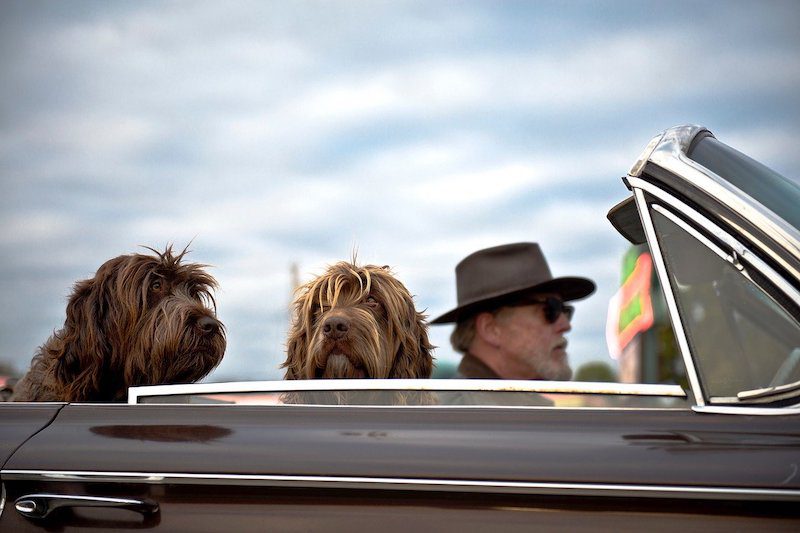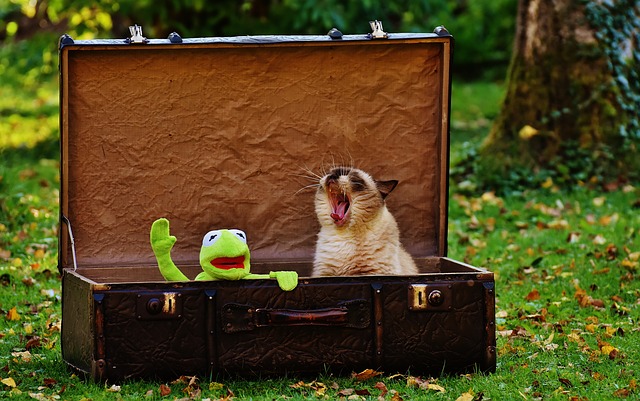
by David Caddell, Hospital Director
The National Highway Traffic Safety Administration (NHTSA) states that their mission is to “Save lives, prevent injuries, reduce vehicle-related crashes.” According to the NHTSA, seat belts save around 15,000 lives every year—but, they say, “nearly 2,500 more lives would have been saved if everyone had buckled up. Clearly, the odds of surviving a crash shift massively in your favor if you first buckle up before taking to the road.” But what about safe travel with pets?
The NHTSA’s data probably doesn’t come as a surprise because we humans clearly recognize the benefits of being “buckled in” when in a moving car. However, do pet owners take the same care when it comes to their 4-legged children?
An accident close to home
Recently—and tragically—an unrestrained dog jumped into a driver’s lap, leading to a fatal car accident involving two pickup trucks in York Township, south of Ann Arbor. The driver of the first truck had six dogs in the vehicle at the time and was distracted for a brief few seconds while trying to move the dog from her lap. She unintentionally crossed the center line and struck the second pickup head-on, critically injuring the 73-year-old driver; he died while being transported to the hospital. Three of the six dogs in the first vehicle also lost their lives in the accident.
This tragic case is a prime example why the veterinarians and staff at the Ann Arbor Animal Hospital and Ann Arbor Animal Hospital Emergency Service urge pet owners to view their pets in the same way as people and “buckle-up” using pet restraints. In the case of smaller pets, belted-in car carriers provide the same protections as pet restraints.

When used correctly, a harness like this can save your dog’s life in a car accident. Photo by Sleepypod.
Safe travel with pets means restraint
Per statistics from the American Automobile Association, with 43.3 million American households having dogs, more than 80% of dog owners will drive with their dogs in the car with them. However, only 16% have them safely restrained. These statistics are concerning, so we coach pet owners—whether it’s a long vacation or a short trip to the store—to utilize pet restraints to ensure their pet’s car ride is safe and fun.
Most dogs love having the freedom to move around in the car. In the event of a crash, though, an unrestrained pet will become a projectile, putting them and any human occupants of a car at further risk.
The best way ensure that all passengers arrive safely at their destination is to make sure that they’re all restrained. For people, this means a seat belt; for pets it means a crate/kennel or carrier, or some sort of a harness attached to the vehicle to limit movement. Safe travel with pets means being responsible for their security.
Harnesses & Carriers
If you aren’t sure what restraint system is best to suit your needs, we suggest you visit this helpful site in order to educate yourself on some of the best harnesses available to keep your dog safe.
Have a furry feline? The best thing for them is a padded cat carrier in the back seat, buckled in. Head over to Adventure Cats for helpful tips on how to travel with your cat to make sure your finicky kitty arrives safe, happy, and purring their contentment to their caring and responsible owner.
No matter the length of your car ride, it’s important to keep pet safety in mind for you, for them, and everyone else you’re sharing the road with.

Safe travel with pets in the car depends on having the proper equipment, whether you have a cat, a dog, or frog.
Recent Posts
About Us
Ann Arbor Animal Hospital is a locally-owned animal hospital operating for over 90 years in Ann Arbor, MI.
